The concept of "Glycemic Index" (GI) in the strict sense belongs to clinical biochemistry and expresses the relationship between the hyperglycemic response (increased glucose in blood) of a food and that of a standard reference substance (usually glucose, sometimes white bread).
The GI then measures the ability of a substance, once ingested, to raise blood sugar (in speed, quantity and duration) compared to a reference standard that is pure glucose.
Basically, after you ingest a fixed amount of glucose, your blood sugar rises for a certain time; then it drops thanks to the release of insulin by the pancreas. If you measure this trend and you report it on a graph you get a bell-shaped curve in which are important both the maximum values reached (peak), both the time course (slope).

The area of this bell is measurable: it is defined "Area under the Curve" (AUC).
The GI of a given substance or food is the percentage ratio between the area measured as a result of ingestion and that obtained by administering an equivalent amount of glucose (or white bread or other standard):
IG= ( Food Area / Glucose Area ) × 100
In general, the GI is measured by administering 50 grams of the carbohydrate in the study and measuring the area of the glycemic bell curve over time from the time of administration (time 0) to two (or more) hours later. In the case of glucose, which is the standard reference, the weight used for analysis is 50 grams. For each other food to be tested, the weight must correspond to a quantity of food having a theoretical carbohydrate content equivalent to 50 grams of glucose: eg. The carrots contain about 7,6 % of sugars (7,6 g of sugars are contained in 100 g of raw carrots): to obtain the GI of the carrots it is necessary to ingest an equivalent amount ( and therefore comparable) to 50 grams of sugars, that is 6,6 (ie 50 / 7,6) x 100 = 660 grams.
The GI values currently attributed to the different substances are therefore the result of practical experiments on samples of volunteers (see below: Method of determination of the GI of food) but with rather theoretical meaning.
In practice, in fact, the GI of a substance may differ considerably from the experimental value as it varies greatly in relation to several factors that are not well standardized such as food preparation, the way they are chewed, the rate of ingestion etc. (See "Glycemic Index Variability Factors").
For example, an increase in cooking time generally increases the GI of a food.

The subject has been studied so much and many analyses have been carried out on the main substances and foods. There are tables showing the GI values of many foods, classified according to their effect on blood sugar compared with a standard substance (white bread or glucose).
Food GI has been used - sometimes erroneously - for various applications such as diabetes control, sports diets, appetite control etc.
Method for determining the GI of food
According to the international standard to determine the GI of a "food test" it is necessary to use a sample of at least 10 subjects (voluntary persons) and to derive an average value.
The determination takes place in 3 steps.
Step 1:
- The 10 subjects ingest at the time 0 "food test" to be examined in the amount corresponding to the content (theoretical) of 50 grams of carbohydrates available, ie digestible: eg. if the food theoretically contains 10 g of carbohydrates per 100 g of food, the amount of food to be ingested will be 500 g;
- for each subject you measure blood sugar every 20 minutes for a period of two hours;
- for each subject the curve of the glycemic trend is drawn;
- for each subject the area below the blood sugar curve is measured (Glucose AUC = Blood Glucose Area Under the Curve).
Step 2 (on another occasion, away from Step 1):
- The same 10 subjects ingest 50 grams of glucose (that is the same amount contained in the food to be tested in Phase 1);
- For each subject it's measured the blood sugar every 20 minutes for a period of two hours;
- For each subject it's drawn the curve of the glycemic trend;
- For each subject it's measured the area below the blood sugar curve (Glucose AUC = Blood Glucose Area Under the Curve).
Step 3 (calculation):
- For each subject the two values of Glucose-AUC are obtained:
- Glucose-AUC of the food tested (A)
- Glucose-AUC of the glucose (G)
- For each subject the A/G ratio is calculated and an GI is obtained;
- the average value of the 10 subjects is calculated and the final Glycemic Index is obtained for the test food;
- It is multiplied by 100 and the percentage GI value is obtained from glucose.
The variability factors of the Glycemic Index
(da: http://www.montignac.com/it/i-fattori-di-modifica-dell-indice-glicemico/)
The vast majority of the carbohydrates usually consumed by man are complex carbohydrates, composed essentially of starch. Foods containing starch are so-called starchy foods and are divided into four families:
|
The different families of amylaceous |
|||
|
Cereals |
Tubers |
Legumes | Fruit |
|
Oat Hard wheat Soft wheat Corn Millet Barley Rice Rye Sorghum |
Yam Manioc Potato Sweet Potato Tania Eddoe |
Beans Peas Chickpeas Lentils Fave Beans |
Bananas Mango Apples |
All the starches, in order to be absorbed and to pass in the blood circulation must be transformed in glucose by action of the digestive enzymes (in particular the alpha-amylase). Digestion begins in the mouth with chewing and continues in the small intestine, after passing into the stomach.
The increase in blood sugar testifies to the level of glucose absorption and, therefore, the digestibility of starch. This physiological passage in the organism - varying from food to food - is expressed by the GI of each food.
The GI of a food is the result of many parameters, which must be taken into account in nutritional choices.
The variability of the glycemic response to the intake of foods containing starch is linked to several factors:
- Food composition (starch, protein, fat, fibre);
- Amylose/amylopectin ratio;
- Type of thermal, physical and chemical treatment of the food
- Industrial processing
- Grinding (size of starch particles)
- Cooking times and modes
- The degree of ripeness and ageing of the food (e.g. fruit or vegetables);
- Composition of the complete meal in which the individual foods are inserted
- Starch composition of food and protein and fibre content. For some carbohydrates, the natural protein content may be the cause of reduced starch hydrolysis (digestion) and consequently reduced GI. This is particularly true for cereals, especially in pasta. Factors that reduce the GI of starchy foods are:
- The presence of gluten that slows down the action of digestive amylases and limits the absorption of glucose.
- The content of dietary fibers that can constitute a barrier against the action of amylases, and thus further reduce the uptake of glucose. It is mainly soluble fibres (which are found in most cases in legumes, but also in oats) that can play a direct or indirect role in reducing intestinal absorption of glucose, and thus lower the GI of the starch in question.
- Amylose/amylopectin ratio. The starch granule consists of two types of molecular components: amylose and amylopectin, associated with lipids, proteins, fibers, micronutritions (vitamins, minerals... ). Amylose is digested slower than amylopectin (hence lower GI). Foods with a high amylose/amylopectin ratio generally have a lower GI. Cereal starches contain between 15 and 28% amylose. Some maize varieties contain less than 1% starch (e.g. "Waxy" or waxy maize) widely used in the food industry as a thickener, labelled as "corn starch"). Other varieties of maize containing 55 to 80% of them are little cultivated due to their poor yield. Starches of tubers (also called starches), for example potato starch, have a much lower starch content (from 17% to 22%) so they will have a high GI. Legume starches (lentils, dried beans, chickpeas...) are on the contrary much richer in amylose (33 to 66%) and will have a lower GI.
Type of thermal and chemical treatment of food. Hydration and heat increase the GI of a food.
- Gelatinization. The heating of starch increases the GI. In fact, it causes the so-called "gelatinization" due to the presence of amylopectin. The more a starch gelatinizes, the more easily it is hydrolysed by the digestive enzymes of starch (alpha-amylase), the faster it is transformed into glucose, the higher the blood sugar (elevated GI). The potato, very rich in amylopectin, has a high GI. The lentils, however, rich in amylose, have a very low GI. The raw carrot has a glycemic index of 20; boiled in water, its glycemic index rises to 50, because of the gelatinization of its starch. Some industrial processes increase gelatinization (e.g. instant potato puree, cornflakes, etc.) by considerably increasing GI (85 for cornflakes, 95 for flake puree, etc.). Popcorn and puffed rice also increase the original GI by 15-20 % when the grain explodes.
- Pastification. "Pastification" reduces GI. In the case of durum wheat, pastification reduces starch hydration by forming a protective film, which helps to slow down starch gelatinization during cooking. This process applies to spaghetti and some types of noodles, but it does not apply to ravioli, lasagna or fresh pasta whose glycemic index is much higher, although it contains the same durum wheat flour. Starting from the same flour you can then obtain products with very different glycemic indices (ravioli 70, spaghetti 40).
- Type of cooking. In the case of pasta, the cooking before consumption further modifies the final GI. Cooking al dente (from 5 to 6 minutes) allows the GI of spaghetti to be kept at the lowest level, while a prolonged cooking at 15-20 minutes causes an increase in GI due to the acceleration of starch gelatinization. Steaming, delicate or stewed, with a low hydration power, when compared to cooking by immersion, causes a minimum gelatinization.
- Retrogradation: the reverse process of gelatinization. After cooking, which causes gelatinisation, the starch changes again when it cools. In practice, the return (more or less important) to the previous molecular structure occurs. This phenomenon is called retrogradation and increases with time and with the reduction of temperature.
- Retrogradation does not result in a full reversibility of gelatinisation, but it does reduce the GI.
- The higher the amount of amylose in the food, the more evident the phenomenon is.
- The addition of lipids to a starch that has been gelatinized causes a slowing of retrogradation.
- A retrograded starch that is heated loses part of its gelatinizing power. A fraction (about 10% ) of the retrograde starch becomes thermoresistant, which would lead to show that the heating of a glucide after storage in the cold would help to reduce its glycemic index.
Prolonged storage at low temperatures (5 weeks) of amylaceous foods (e.g. vacuum-ready dishes) facilitates retrograde. Spaghetti (also refined) cooked al dente, or cooled and eaten in salad, have an GI equal to 35 (lower than that of spaghetti that is 40). The same phenomenon is achieved by allowing certain foods to dry out. For example, the more stale the bread, the more moisture moves outwards, thus facilitating the starch retrogradation. The same happens when you have your bread toasted. A loaf made with the same flour, depending on whether it is prepared fresh (and still hot), stale or toasted, will not have the same glycemic index. Freezing a fresh loaf of bread, then thawing it at room temperature, leads to significantly lower its original glycemic index. Even cold green lentils (especially if they remain in the refrigerator for 24 hours) have an even lower glycemic index than the same freshly cooked product (between 10 and 15).
Original (raw and natural) starch is not only present in raw foods but may persist in this form after cooking when the water content of the product has been locally insufficient to allow gelatinisation. This is the case, in particular, with the bread crust and the "short pastry" cookies, where the granular structure of the starch persists in part after cooking, thus decreasing the GI compared to the starches that instead have been gelatinized (e.g. bread crumbs).
- The degree of maturation and aging. The amylaceous fruits increase their GI according to the degree of ripeness because, when ripening, the starch contained in the fruit is transformed and becomes less and less resistant. The phenomenon is particularly evident in the banana (much less for the apple). A unripe (green) banana will have a rather low GI (about 40), while at the end of its maturation the index will be much higher (65). The same effect of maturation is produced by cooking: the GI of a cooked green banana is higher. Even the preservation of some foods, especially potatoes, causes an increase in GI due to the natural processing of their starches. Thus, potatoes stored for several months have a higher glycemic index than new potatoes.
- The size of the particles. After milling and flour reduction of an amylaceous (e.g. cereal) is ground the more the starch particles are thin, the more the hydrolysis of the starch molecules is favored with a consequent increase of the GI compared to the original food (e.g. rice flour has a higher GI than the original rice). The white flour, produced after the invention of the cylinder mill around 1870, seemed a great progress, but it proved to be an impoverishment of the nutritional quality of bread: less fiber, less protein and micronutrients (vitamins, minerals, essential fatty acids...), increasingly high GI in all foods of which this flour is a major component. Wheat and stone-ground, reduced to large particles, kept the entire components of the grain of wheat («whole-wheat bread»). The GI was low (between 35 and 45).
|
Nutrients |
Wholemeal flour per 100g |
White flour (T55) per 100g |
|
Proteins |
12 g |
8 g |
|
Lipids |
2.5 g |
1 g |
|
Glucides |
60 g |
74 g |
|
Fibers |
10 g |
3 g |
|
Water |
15.5 g |
14 g |
|
Size of the particles |
Gross |
Thin |
|
Glycemic Index |
40 |
70 |
- C1. Composition of the meal. See below (Significance of Glycemic Index)
Meaning and limits of the Glycemic Index
The glycemic index is a numerical classification system used to measure the rate of digestion and absorption of foods containing carbohydrates and their consequent effect on blood sugar, that is, on glucose levels in the blood. A food with a high GI score produces a large momentary peak of glucose after consumption. In contrast, a food with a low glycemic index causes slower and more sustained glucose elevation in the blood.
Glycemic index has become a method of trying to determine how healthy a food can be.
Foods with a high GI contain rapidly digestible carbohydrates that produce a very rapid increase in blood sugar (and subsequently insulin) followed by an equally rapid decrease (if the pancreas - which produces insulin - works well).
In contrast, foods with a low GI contain slowly digestible carbohydrates that produce a gradual and relatively low increase in blood sugar.
The various foods were classified on a scale of 0 to 100 according to the GI. There are several classifications but the most widely accepted ones divide the foods in three groups:
- Low GI: < 55
- Medium GI: 55 - 70
- High GI: > 70
The frequent consumption of high GI foods stimulates the sense of hunger; in situations where it is useful to contain calorie consumption, low GI carbohydrates are preferred.
On the contrary muscle recovery after exercise is favored by food consumption to other GI.
Numerous recent scientific evidence recommends diets with low glycemic index both for the management of different pathologies (diabetes, inflammatory and autoimmune diseases) and for the maintenance of weight; However, there are several factors that limit the use of the Glycemic Index as an absolute indicator of good nutrition.
- In practice, the meal is almost always composed of several different GI foods. Therefore the effect on glycemic elevation should be considered in its entirety and not for individual food. For example, a meal rich in vegetables or whole foods can lower the overall GI of the meal itself.
- For the very definition of Glycemic Index it is observed that foods with high GI, in reality can cause a modest increase in blood sugar. For example, carrots, which contain very small amounts of carbohydrates (7.6 g per 100 g of food) have in fact a theoretical GI of 100, equal to glucose, used as a reference standard, but their intake - in the usual quantities - results in a modest increase in blood sugar. We recall that the calculation of the GI is done considering the amount of food that contains 50 g of carbohydrates (see above).
- The rise of the glycemia depends on several subjective factors such as digestion times, the state of health of the subject, etc. …
In order to understand and evaluate the glycemic response to a meal, it is therefore not sufficient to consider only one type of food introduced.
The GI should therefore be considered as an important indicator but should be used with caution so as not to be misled.
The Glycemic Load
As what has been said before, it is clear that GI alone is not enough to assess the effect of a certain food on blood sugar. We have seen the case of carrots that have a high GI, but in reality contain a very low amount of sugar and affect very little, to the quantities normally ingested, the post-prandial glycemic peak.
A more complete indicator could be the Glycemic Load (GL) of different foods that also takes into account the amount of carbohydrates present in the food. Intuitively the carrot has a high GI, but a low GL.
The GL is calculated from the GI using the following simple formula::
GL = (GI x gr of carbohydrates %) / 100
GL values were calculated as the product of the amount of available carbohydrate (non % ?) in a specified serving size and the GI value (using glucose as the reference food), divided by 100. (DIABETES CARE, VOLUME 31, NUMBER 12, DECEMBER 2008)
Taking the example of carrots: Carrots GL = (100 x 7,6) / 100 = 10
So by reviewing the classification according to the GI, you can complete it in this way:
|
|
Glycemic Index (GI) |
Glycemic Load (GL) |
|
Low |
< 55 |
< 10 |
|
Medium |
55-70 |
10-20 |
|
High |
> 70 |
> 20 |
Although the Glycemic Load is more precise than the GI, it remains influenced by the same factors that influence the GI
Therefore, these indicators can be taken into account to get an idea of how individual foods can influence the insulin response of our organism, with the awareness however that they are purely theoretical indicators and that in daily practice, within a full meal, the use of small amounts of simple sugars does not significantly vary the insulin response of our body.
Although the Glycemic Load is more precise than the GI, it is still influenced by the same factors that influence the GI.
Therefore, these indicators can be taken into account to get an idea of how individual foods can influence the insulin response of our organism, with the awareness however that they are purely theoretical indicators and that in daily practice, within a full meal, the use of small amounts of simple sugars does not significantly vary the insulin response of our body.
Kilocalories and weight gain..
Contrary to what has been believed for a long time, the energy factor (without being negligible) is not decisive in the increase of weight.
All epidemiological studies have clearly shown that there is no correlation between the level of calorie consumption of a population and its obesity rate. It has even been found that in many cases there is an inverse correlation.
Since 1960 the average daily calorie consumption in Western countries has decreased by about 35%. While in the same period of time the percentage of obesity has increased by 400.
Numerous studies in the last 25 have shown that hyperinsulinism is always associated with weight gain and obesity. B. Jeanrenaud states that in all forms of obesity there is hyperinsulinism which is directly proportional to the body mass index.
In summary an excess of insulin results in an increase in weight and on the contrary a decrease of insulinemia results in a loss of weight.
These evidences therefore suggest a diet with low glycemic index you can lose weight both to maintain it.
Not all carbohydrates are equal
For a long time, carbohydrates were thought to be interchangeable. This has not been the case for some time now, since the different carbohydrates do not have the same metabolic effects. They have also been shown to have a differed absorption rate. From these characteristics the carbohydrates have been subdivided according to their ability to raise or not the glycemia: carbohydrates with high glycemic index and low glycemic index.
Resistance to insulin
If a person exceptionally consumes one or more high GI carbohydrates, the insulin secretion so caused is effective enough to lower the glycemic curve.
But if the consumption of high GI carbohydrates becomes a habit, we see the appearance of insulin resistance (we also speak of reduced insulin sensitivity). Glucose in fact, despite insulin, is late in getting out of the bloodstream. It is the stage of insulin resistance, which is particularly marked in the case of type II diabetes.
Insulin receptors no longer function normally. For this reason, insulin is not «correctly recognised» by gluco-dependent tissue cells, which are no longer properly informed of its presence. In this way the blood sugar remains abnormally high because the glucose is late in relocating. Faced with this inertia, the organism «becomes impatient» and orders the pancreas a new dose of insulin that only aggravates hyperinsulinism. This creates a real vicious circle in which hyperinsulinism feeds insulin resistance.
Hyperinsulinism generates weight gain
Several authors have described one of the fundamental properties of insulin as acting on fat metabolism. This is the phenomenon of lipogenesis.
- Storage of fatty acids in reserve fats
Insulin, and especially hyperinsulinism, stimulates the activity of an enzyme: lipolipase. It must be known that this enzyme has the function of mobilizing the circulating fatty acids (which correspond to the fatty acids consumed during the last meal) to store them in the form of triglycerides, thus increasing the volume of fat cells (adipocytes).
- In addition, insulin will inhibit another enzyme, the triglyceride-lipase, which is responsible for lipolysis, that is to say, the removal of reserve fats (see below).
- Storage of glucose in reserve fats
If the blood sugar that follows the meal is very high, it is likely that the corresponding glucose is in excess of the body’s needs. The hyperinsulinism that this glycemia will have generated will therefore have as consequence, under the impulse of the protein-lipasi, to transform such residual glucose in fat that will be stored in the fat cells.
Hyperinsulinism is therefore the functional cause of weight gain!
But the legitimate question is: "What would these fatty acids have become if they had not been stored because of lipogenesis?".
The answer is simple, though surprising: if they had not been activated by lipoprotein-lipase (because of insulin), these fatty acids would simply have been used (burned) by the body that, under these circumstances, properly adjusts its metabolic performance.
The weight loss process (lipolysis)
As we have just seen lipogenesis is the metabolic process that leads to the constitution of reserve fats, therefore to weight gain. Lipolysis is exactly the opposite: it is the metabolic process that leads to the destocking of fats, therefore the origin of slimming.
The body is actually in a situation where it takes the fatty acids from the fat cells (adipocytes) to use them as fuel, thus decreasing the volume.
For this to happen, it is necessary that the insulin level is low. The mechanism is as follows:
A low level of insulin has as a consequence the activation of an enzyme, the triglyceride-lipase, whose function is to free the fatty acids from the adipose tissues (adipocytes) bringing them back in the blood so that they can be used as fuel.
Subsequently, the organism will endeavour to use them (burn them) modifying as necessary their energy performance.
In conclusion, we can say that insulin is the catalyst for weight gain.
Consequently, through the management of insulin level, making sure that it is as low as possible, it triggers the weight loss process. And to succeed you will obviously need to minimize the glycemic amplitude of the after meal (post prandiale).
The only solution will obviously be to consume only carbohydrates with a low and even very low glycemic index.
Experience has shown that by consuming only carbohydrates with a glycemic index of less than or equal to 35, the insulin response is sufficiently low to allow the activation of the slimming enzyme, triglyceride-lipase, and thus trigger weight loss.
The determining factor of weight gain is therefore, as we have just seen, the consumption of carbohydrates with a high glycemic index.
The phenomenon of lipogenesis discovered in the previous paragraph makes us understand why and in what way. Similarly, by discovering the phenomenon of lipolysis, we can understand how the essential factor of slimming is the consumption of carbohydrates with a very low glycemic index.
But we also realize that weight gain is not just the result of the storage of fats consumed throughout the meal. Insulin also affects excess glucose generated by excessive consumption of high glycemic index carbohydrates.
For many years, nutritionists believed that glucose could not become fat. For this reason they recommended to consume mainly carbohydrates, stating that these did not make you fat.
While, as Professor Walter WILLETT denounced: «advising to eliminate fats and recommending to consume carbohydrates nutritionists have helped to increase obesity». The lack of indication regarding the choice of carbohydrates, in fact, led obese to consume mostly carbohydrates with a high glycemic index. In this way, not only did they trigger a secretion of insulin, but they also generated considerable quantities of surplus glucose that were not necessary to the organism, which were transformed into reserve fats.
[1] Sugars, carbohydrates, carbohydrates are equivalent terms used in an absolutely interchangeable way.
[2] http://nut.entecra.it/646/tabelle_di_composizione_degli_alimenti.html?idalimento=005150&quant=100
[3] K. Foster-Powell, J.B. Miller. 1995 International tables of glycemic index. Am.J.Clin.Nutr. 62:871S-90S
[4] http://www.vitalia-informa.it/wp-content/uploads/2015/09/Tabella-Indici-glicemici.pdf
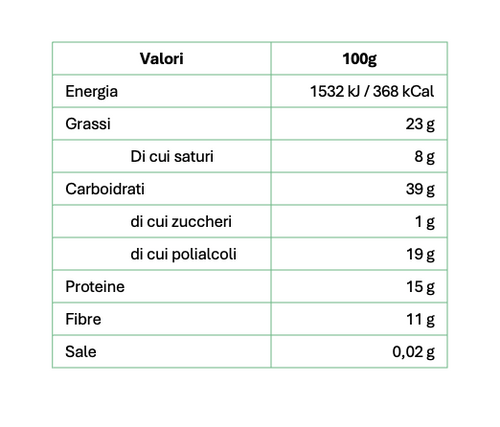
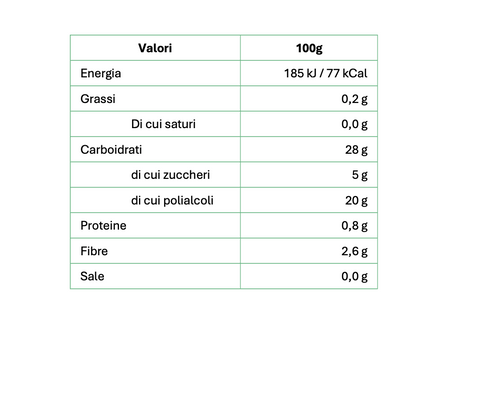
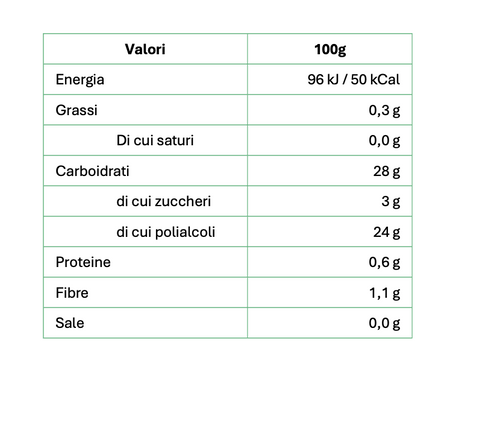
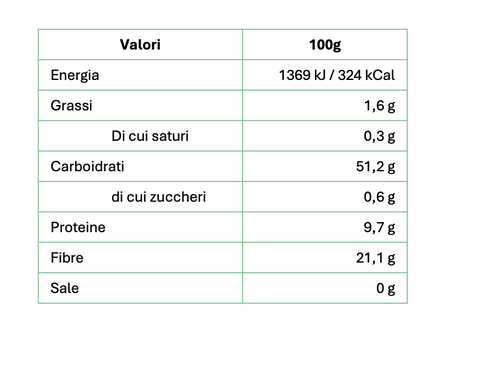
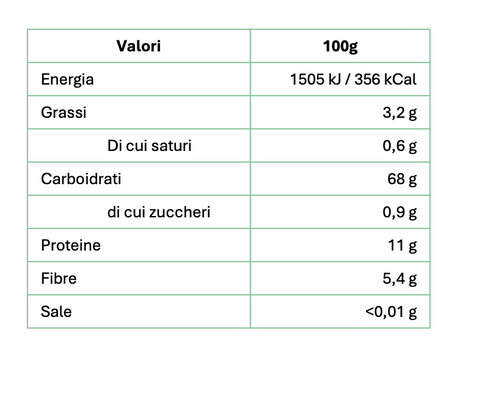
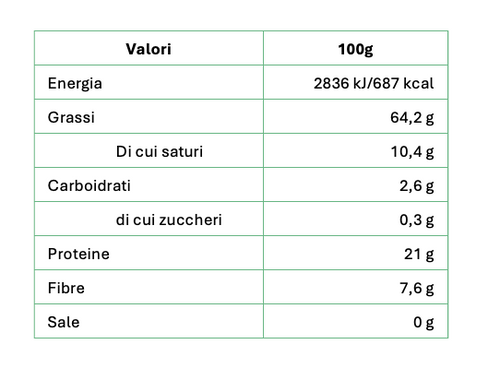
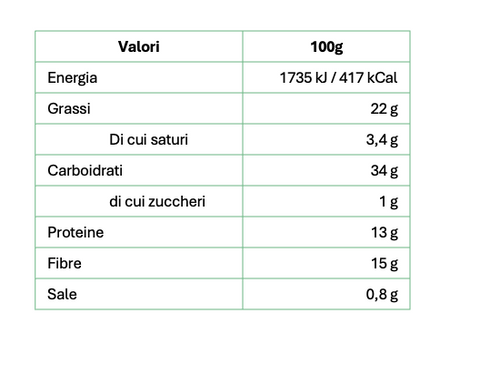
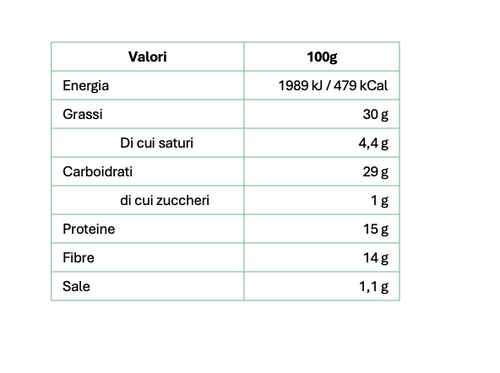

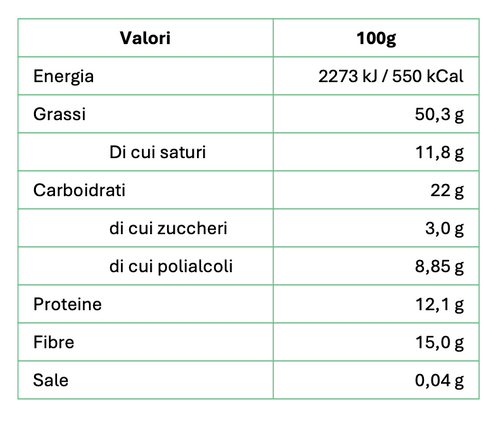
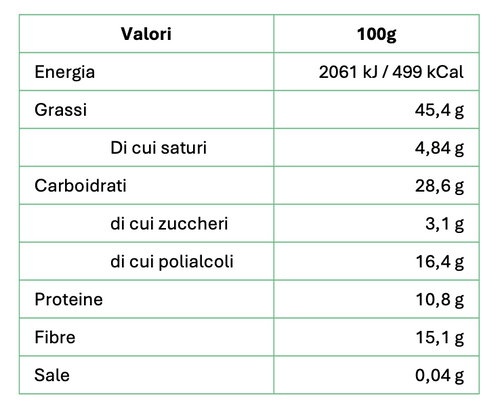
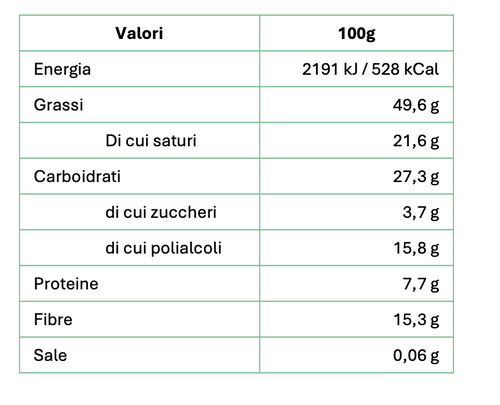
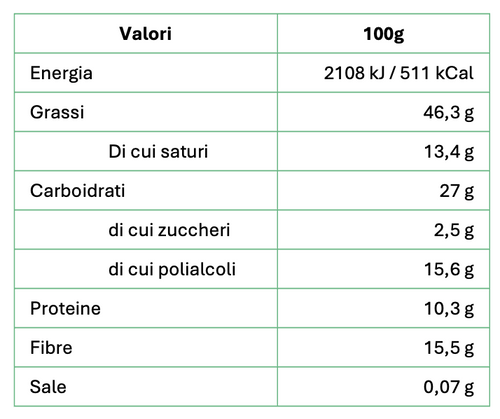
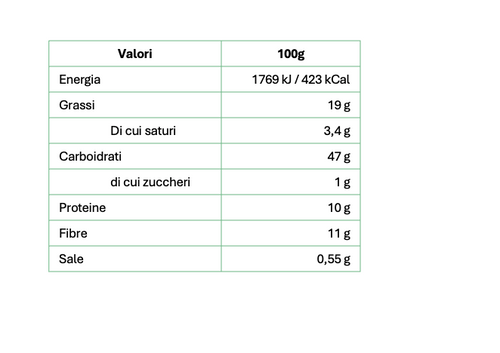



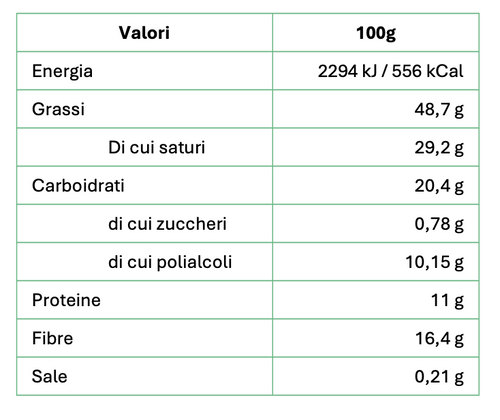
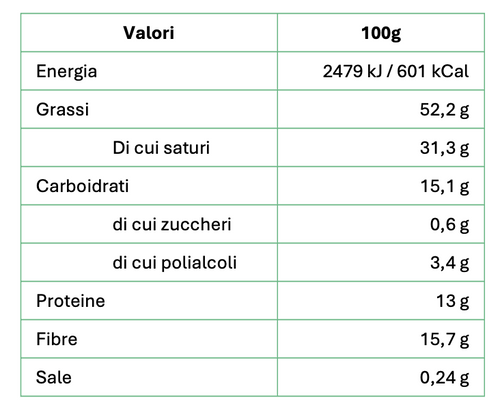

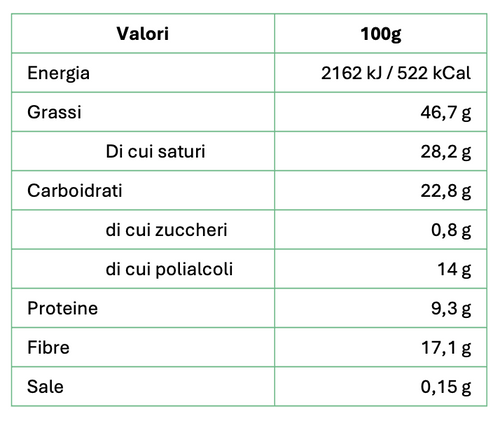
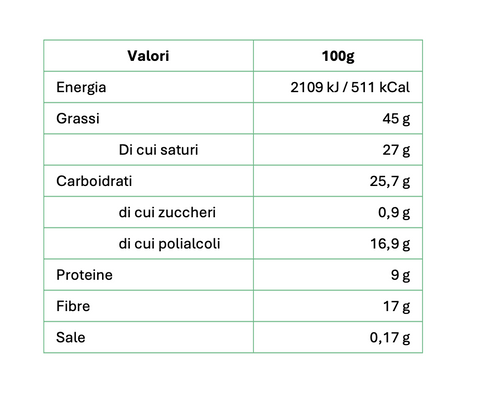
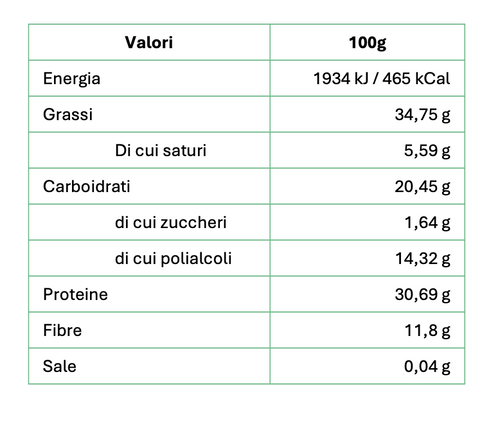
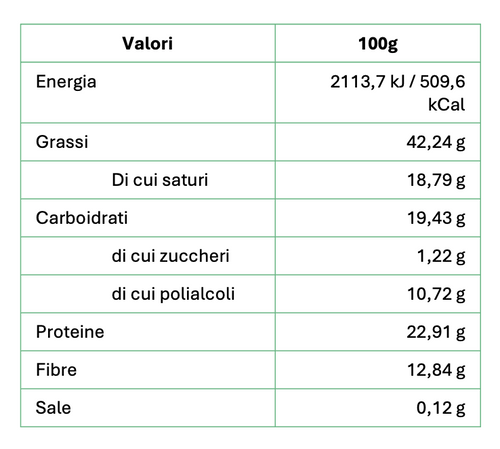


Share and get 15% off!
Simply share this product on one of the following social networks and you will unlock 15% off!